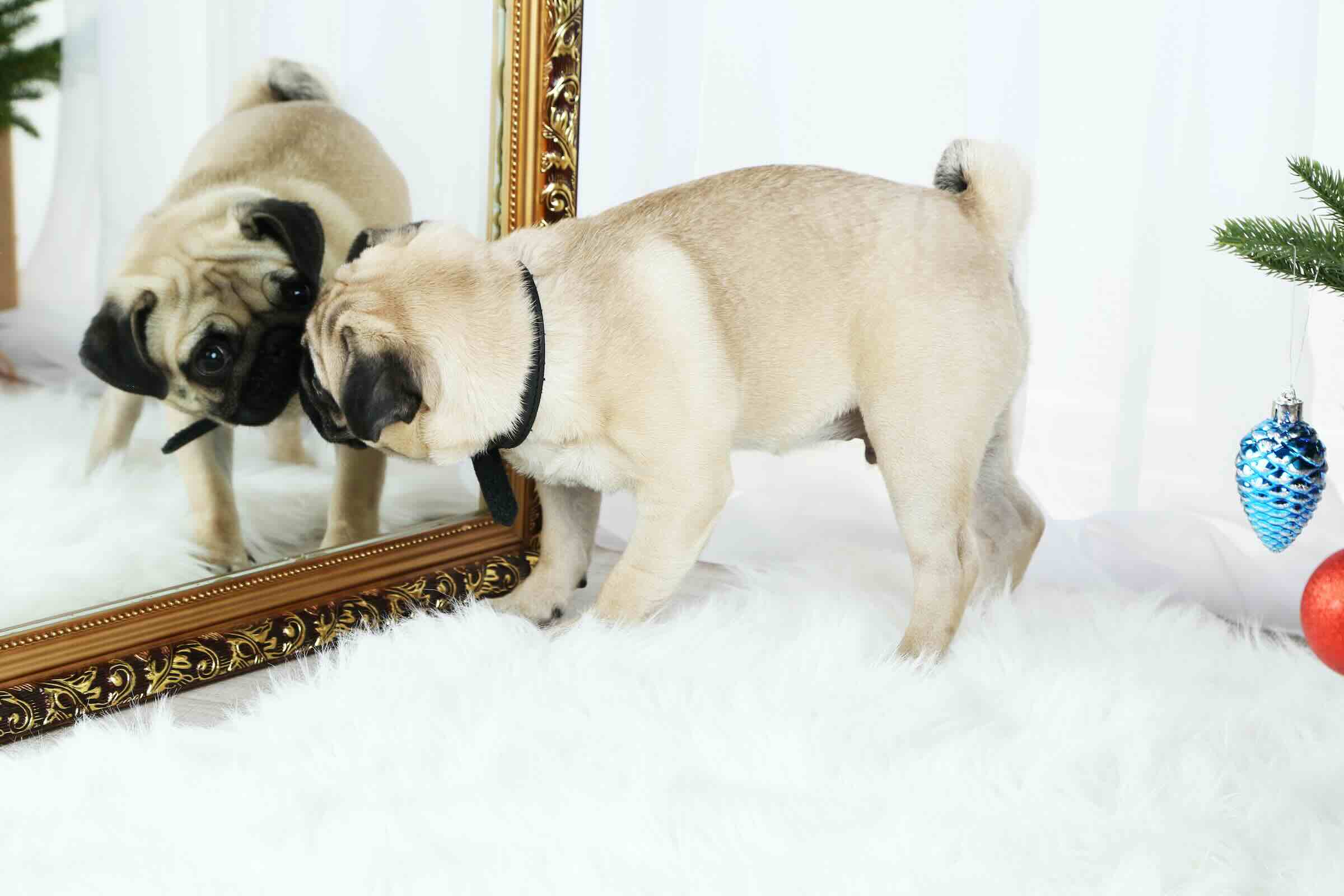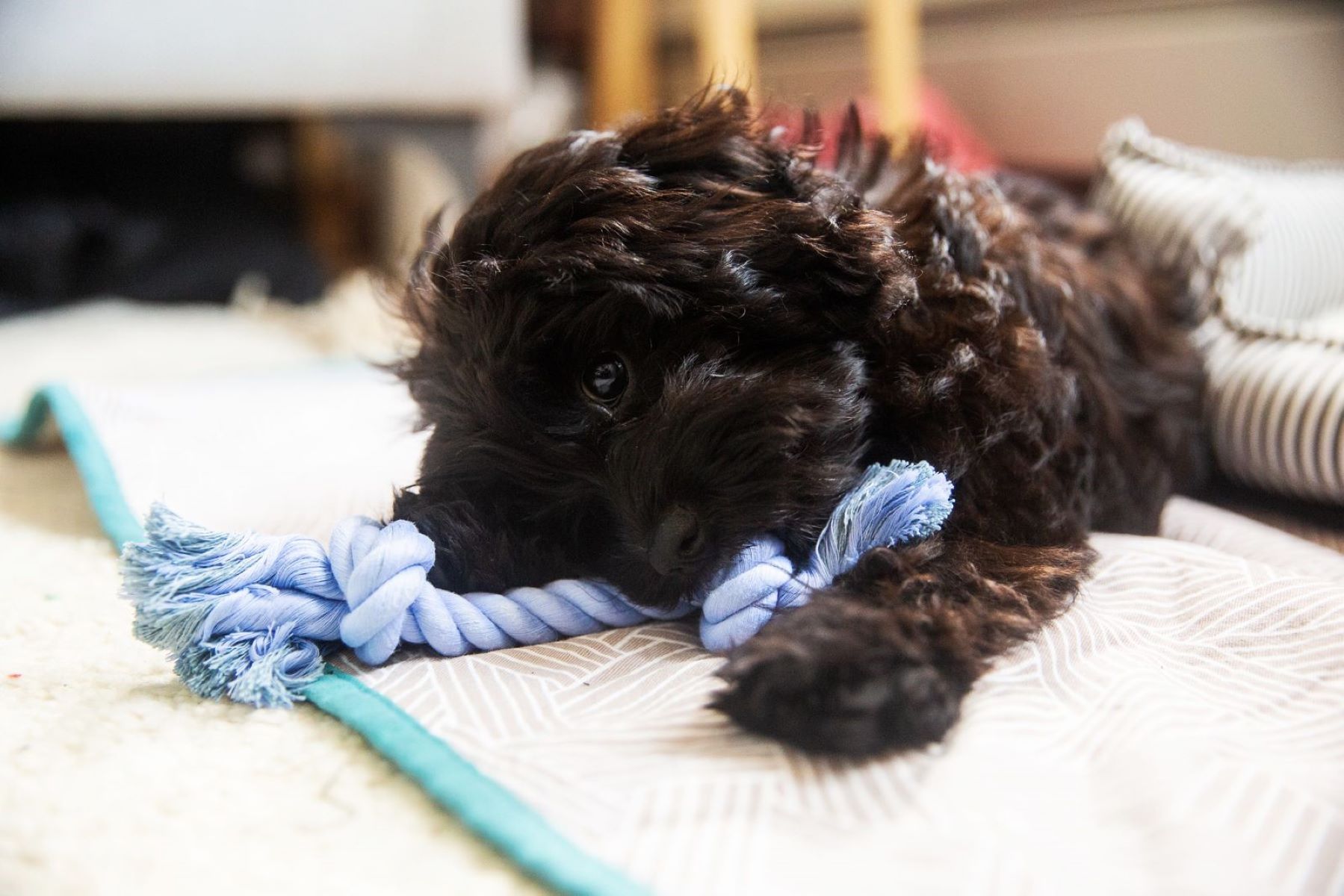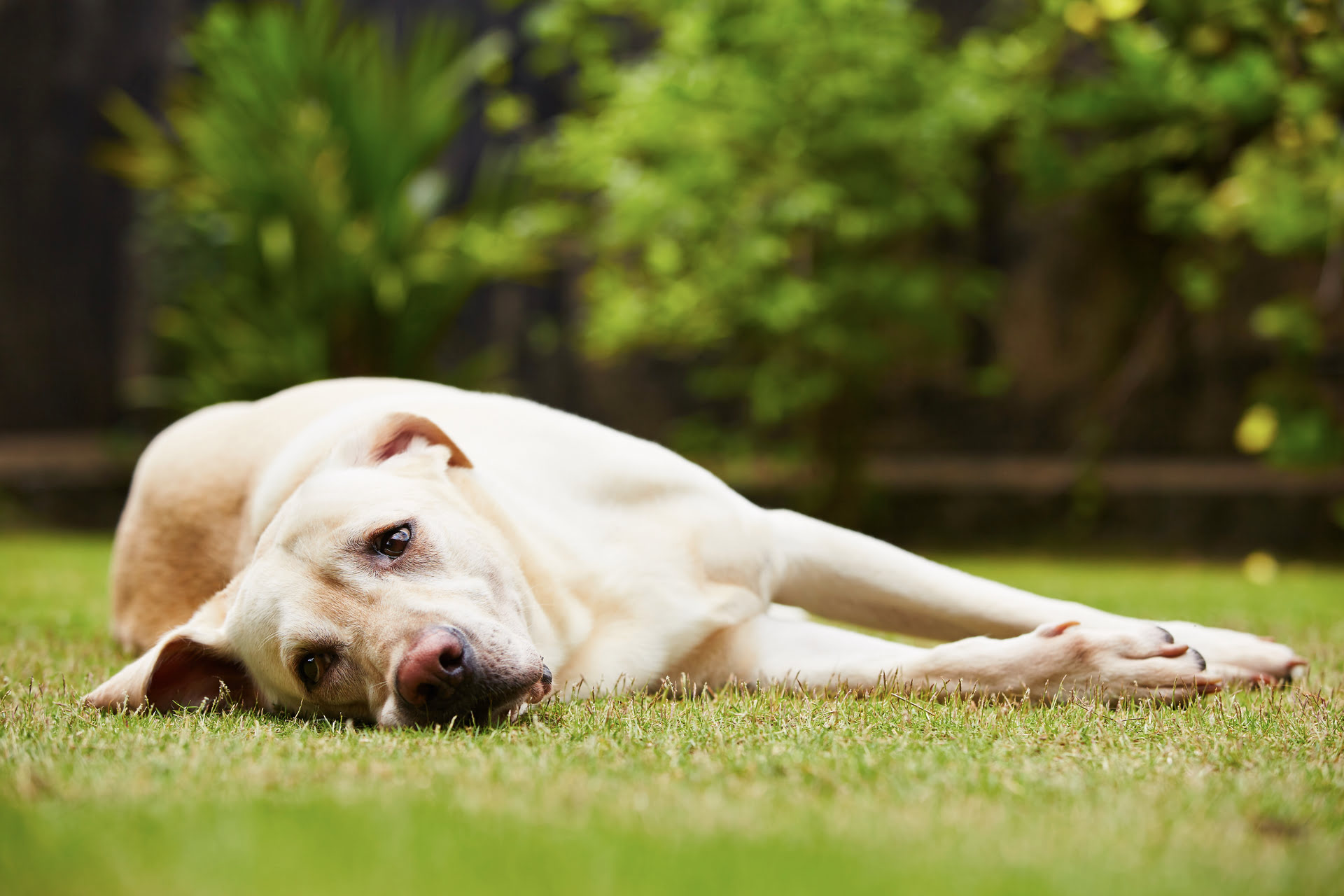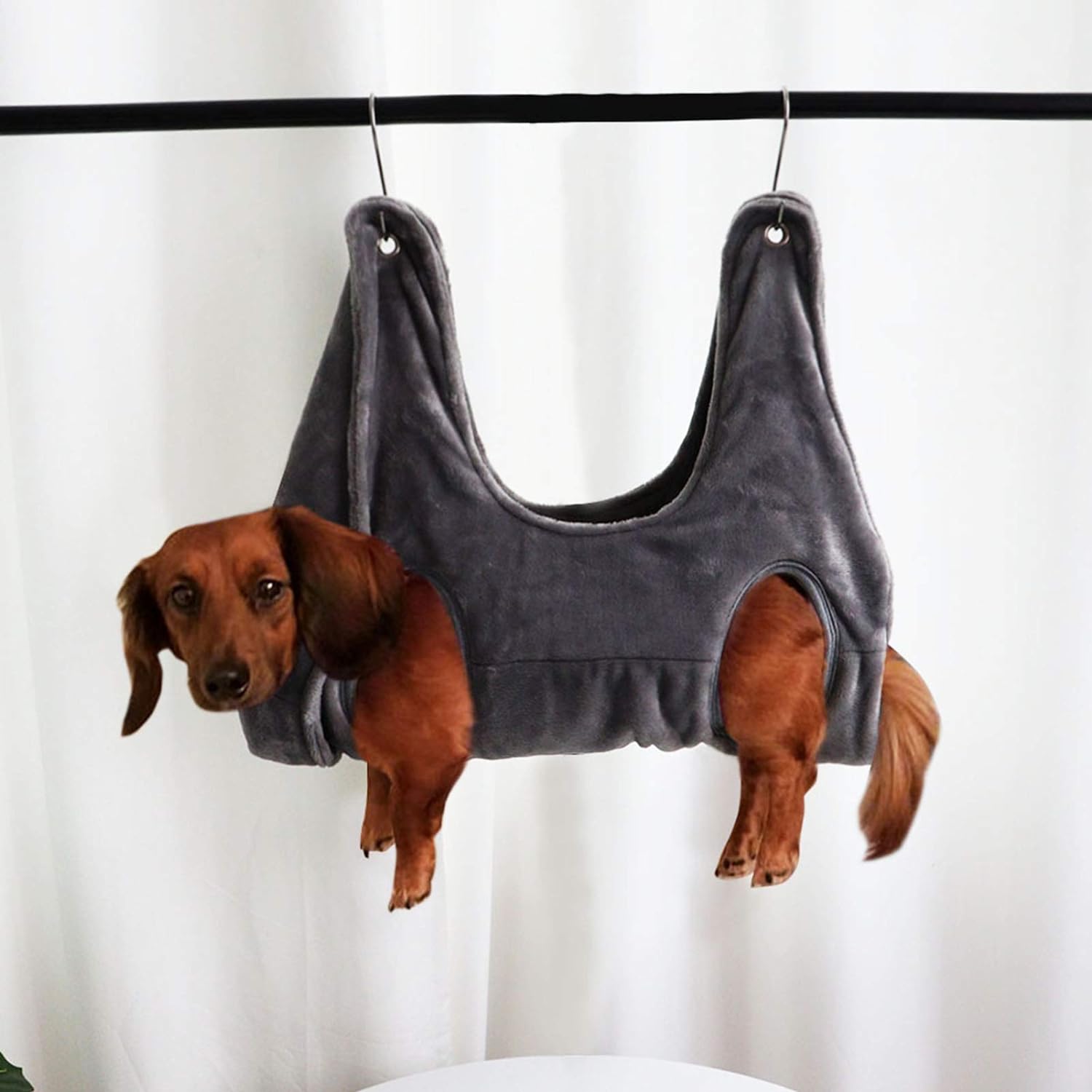

Articles
What Do Dogs Think Of Mirrors
Modified: December 7, 2023
Discover what dogs really think of mirrors in this insightful article. Learn about their fascinating reactions and behaviors when confronted with their own reflection.
(Many of the links in this article redirect to a specific reviewed product. Your purchase of these products through affiliate links helps to generate commission for Storables.com, at no extra cost. Learn more)
Introduction
When it comes to our beloved pets, there is often a sense of curiosity about what goes on in their minds. Dogs, in particular, have long fascinated us with their incredible ability to sense and perceive the world around them. One intriguing aspect of their perception is their interaction with mirrors. Have you ever wondered what dogs think of mirrors? Do they recognize themselves or do they perceive the reflection as another dog? In this article, we will explore the fascinating world of canine perception and delve into how dogs interact with mirrors.
Understanding how dogs perceive their surroundings is essential to comprehend their reaction to mirrors. Dogs rely on a combination of senses, including their sense of sight, smell, and hearing, to navigate and interpret the world. Their vision, while not as sharp as humans’, is highly specialized for detecting movement and perceiving objects in low light conditions. This unique visual acuity plays a crucial role in their interactions with reflective surfaces like mirrors.
Key Takeaways:
- Dogs’ reactions to mirrors vary based on individual personalities, past experiences, and exposure. Understanding their behavior and introducing mirrors gradually can create a positive and comfortable environment for our furry companions.
- While dogs may not recognize themselves in mirrors like humans do, their reactions provide a captivating glimpse into their unique perception of the world. Observing and respecting their responses is essential for their well-being.
Read more: What Do Cats Think About Mirrors
Understanding Canine Perception
Dogs experience the world through a different lens. While humans have three types of color receptors (cones) in their eyes, allowing us to see a wide range of colors, dogs only have two types of cones, limiting their color perception to shades of blue and yellow. This means that the world appears less vibrant to them compared to humans. However, dogs compensate for this by having a superior ability to detect motion. Their eyes contain a higher number of cells called rods, which are responsible for detecting movement and tracking objects in their peripheral vision.
Their superior motion detection capability ties into another significant aspect of canine perception: their reliance on body language and non-verbal cues for communication. Dogs are incredibly skilled at picking up on subtle movements and signals, allowing them to interpret the intentions and emotions of both humans and other dogs. This ability comes into play when dogs interact with mirrors, as they rely heavily on visual cues to understand their surroundings.
Additionally, dogs have a highly developed sense of smell, which plays a more dominant role in their perception of the world than their vision. Their olfactory system is incredibly sophisticated, allowing them to detect and identify a wide range of scents. This keen sense of smell helps them gather information about their environment, identify other animals or objects, and even track scents over long distances.
Now that we have a better understanding of how dogs perceive the world, let’s explore how this knowledge relates to their interactions with mirrors.
Dogs and Visual Recognition
Visual recognition is an important aspect of canine perception, as it helps dogs identify familiar objects, navigate their environment, and recognize other animals or individuals. While dogs may not see colors as vividly as humans do, they are still capable of differentiating between objects based on their shape, size, and movement.
When it comes to recognizing other animals, dogs primarily rely on their ability to assess body language and facial expressions. They are exceptionally skilled at reading the facial cues of other dogs, as well as humans. This is why dogs often appear to pay close attention to our faces, seeking cues about our emotions and intentions.
However, dogs may perceive objects that lack body language or facial expressions, like mirrors, differently. The reflective surface of a mirror can create a confusing visual experience for them, as they may interpret it as another dog or object. This is when their keen sense of smell and their ability to pick up on non-visual cues become vital in understanding the nature of the reflective surface and determining whether it poses any threat or interest to them.
It’s important to note that not all dogs react the same way to mirrors. Some may show curiosity or interest, while others may display fear or aggression. The individual dog’s personality, past experiences, and training history can all play a role in how they perceive and react to mirrors.
Next, let’s explore how dogs respond to their own reflection in mirrors and whether they can recognize themselves.
Reflective Surfaces and Dogs’ Reactions
When dogs encounter reflective surfaces like mirrors, their reactions can vary widely. Some dogs may immediately engage in a playful or curious manner, investigating their reflection with wagging tails and a sense of excitement. On the other hand, some dogs may react cautiously or even defensively, displaying behaviors such as growling, barking, or backing away.
It’s important to understand that dogs’ reactions to mirrors are influenced by multiple factors, including their individual personalities, previous experiences, and exposure to reflective surfaces. Some dogs may have had positive encounters with mirrors in the past, associating them with play or treats. In this case, they may naturally approach mirrors with curiosity and excitement. However, dogs who have had negative experiences with their reflections, such as feeling threatened or challenged, may display defensive or aggressive behaviors.
Furthermore, dogs may sometimes exhibit reactive behaviors when they encounter their own reflection, mistaking it for another dog intruding on their territory. They may perceive the reflection as a potential threat and react accordingly. This reaction can be more prominent in dogs with a strong territorial instinct or a predisposition towards aggression.
It’s worth noting that the size of the dog and the type of mirror can also play a role in their reactions. Smaller dogs may appear more intrigued or threatened by their reflection due to their size relative to the mirror. Additionally, dogs who encounter large, floor-length mirrors may initially react more strongly, as the size and placement of the mirror may create a more realistic and disorienting visual experience.
While seeing a range of reactions from dogs is not uncommon, it’s essential for dog owners to observe their pet’s behavior closely when exposed to reflective surfaces and ensure their safety and well-being.
Now, let’s explore the question of whether dogs can recognize themselves in mirrors.
Do Dogs Recognize Themselves in Mirrors?
The concept of self-recognition in mirrors is a cognitive ability that has been widely studied in various animal species, including primates and dolphins. It involves the recognition of oneself as an individual separate from others. However, when it comes to dogs, the question of whether they can recognize themselves in mirrors is still a topic of debate among researchers.
Some studies suggest that dogs may not possess the same level of self-awareness as humans and certain other animals. When exposed to mirrors, dogs typically exhibit behaviors that indicate they perceive the reflection as another dog or object rather than recognizing themselves. These behaviors can include barking, lunging, or trying to interact with the reflection as if it were a separate entity.
However, it’s important to note that individual dogs may vary in their responses to mirrors, and some may show signs of self-recognition. Some pet owners have reported that their dogs, upon repeated exposure to mirrors, have displayed behaviors indicating they recognize their own reflection. These behaviors can range from sniffing or licking the mirror to showing signs of recognition or interest in the reflection.
While these anecdotal observations suggest the potential for self-recognition in some dogs, it’s essential to consider other factors at play. Dogs are highly perceptive animals and may pick up on subtle cues from their owners. For example, if an owner constantly reinforces the idea that the reflection is the dog’s own image, the dog may begin to exhibit behaviors that seem like self-recognition, but are actually learned responses.
Overall, the question of whether dogs truly recognize themselves in mirrors requires further scientific investigation. While there is evidence to suggest that some dogs may display behaviors indicative of self-recognition, it is not yet definitive.
Next, let’s explore the various behavioral responses that dogs may exhibit when interacting with mirrors.
Dogs may react to their reflection in a mirror as if it’s another dog, or they may ignore it. To understand how your dog feels about mirrors, observe their body language and behavior when they see their reflection.
Read more: What To Do With Old Large Mirrors
Dogs’ Behavioral Responses to Mirrors
When dogs encounter mirrors, their behavioral responses can vary widely. These responses depend on a variety of factors, including the individual dog’s personality, past experiences, and level of exposure to reflective surfaces. Here are some of the common behavioral responses that dogs may exhibit when interacting with mirrors:
- Curiosity: Some dogs may approach mirrors with curiosity, sniffing and inspecting their reflection. They may tilt their heads, wag their tails, and even paw at the glass in an attempt to interact with the image. This behavior is often seen in dogs who perceive mirrors as a novel object or an opportunity for play.
- Aggression: In some cases, dogs may react aggressively towards their own reflection in the mirror. This behavior is more likely to occur in dogs with a territorial nature or a predisposition towards aggression. They may display defensive behaviors such as growling, barking, or even lunging at the mirror.
- Anxiety or Fear: Some dogs may feel anxious or fearful when faced with their reflection in the mirror. They may display signs of stress, such as panting, pacing, or trying to avoid or retreat from the mirror. These reactions can be due to a lack of familiarity with mirrors or past negative encounters.
- Indifference: Not all dogs show a strong reaction to mirrors. Some dogs may simply ignore their reflection and show little to no interest. This response is commonly seen in older dogs or dogs who have been exposed to mirrors from a young age and have become desensitized to them.
- Confusion: Dogs may become confused when faced with their reflection in the mirror. They may tilt their heads, as if trying to understand the presence of another dog in their territory, or they may display body language indicating uncertainty, such as backing away or freezing in place.
It’s important for dog owners to observe and understand their pet’s behavioral responses to mirrors. If a dog’s behavior towards their reflection becomes aggressive or overly anxious, it’s crucial to intervene and provide guidance and training to help them feel more comfortable and reduce stress.
Now that we’ve explored dogs’ behavioral responses to mirrors, let’s delve into possible explanations for their reactions.
Possible Explanations for Dogs’ Reactions
The diverse reactions exhibited by dogs when encountering mirrors can be explained by a combination of factors. Understanding these factors can help shed light on why dogs react the way they do. Here are some possible explanations:
- Lack of familiarity: Dogs may react to mirrors with confusion or even fear simply because they are unfamiliar with the concept of reflective surfaces. Dogs rely heavily on their senses of smell and hearing to interpret the world, so the visual illusion created by mirrors can be disorienting or even threatening to them.
- Mirror as a perceived threat: Some dogs may perceive their reflection as a potential threat or intruder in their territory. This is especially common in dogs with a strong territorial instinct or those who have had negative experiences with other dogs in the past. The dog’s reaction can then be defensive or even aggressive.
- Limited self-recognition: Dogs may not possess the same level of self-recognition as some other animal species, such as primates. They may see their reflection as another dog or object, rather than recognizing themselves. This lack of self-recognition can result in confusion or indifference towards their image in the mirror.
- Anthropomorphism: While it’s natural for us, as humans, to project our own beliefs and behaviors onto our dogs, it’s important to remember that dogs have their own unique way of perceiving the world. Avoiding anthropomorphizing and understanding the distinct canine perspective can help us interpret their reactions more accurately.
- Learned behaviors: Dogs are highly perceptive animals and can pick up on cues and signals from their owners. If a dog is consistently exposed to mirrors and receives positive reinforcement or attention when interacting with their reflection, they may exhibit behaviors that appear to indicate self-recognition. However, these behaviors may be learned responses rather than true self-awareness.
It’s crucial for dog owners to assess their pet’s reactions to mirrors in conjunction with their overall behavior and well-being. If a dog’s response to mirrors is causing distress or poses a risk, it is advisable to consult with a professional trainer or behaviorist who can provide guidance and assistance.
Now, let’s explore some tips for introducing dogs to mirrors in a positive and controlled manner.
Tips for Introducing Dogs to Mirrors
Introducing your dog to mirrors in a positive and controlled manner can help them become more familiar and comfortable with the reflective surfaces. Here are some tips to keep in mind:
- Start slowly and gradually: Begin by allowing your dog to observe the mirror from a distance. This gives them the opportunity to observe the reflective surface without feeling overwhelmed. Gradually decrease the distance over time as they become more accustomed to the mirror.
- Use positive reinforcement: Reward your dog with treats, praise, and attention when they display calm and relaxed behavior around the mirror. This positive reinforcement helps create positive associations with the mirror and encourages them to approach it with a more positive mindset.
- Redirect negative behavior: If your dog displays aggressive or anxious behavior towards the mirror, redirect their attention to a more positive activity or command. This can help shift their focus away from the mirror and onto something more productive and rewarding.
- Make it a game: Engage your dog’s curiosity and natural playful instincts by incorporating interactive toys or games around the mirror. This can help create a positive and enjoyable experience, associating the mirror with fun and engagement.
- Provide reassurance: Dogs are sensitive to their owners’ emotions. If you remain calm and relaxed when your dog encounters the mirror, it can help them feel reassured and less threatened. Avoid showing signs of frustration or anxiety, as this can exacerbate their negative reaction.
- Use scent cues: Dogs rely heavily on their sense of smell to navigate and understand the world. By applying a small amount of their favorite scent near or on the mirror, you can help create a familiar and comforting environment, reducing their stress and anxiety.
- Supervise and intervene if necessary: Be attentive to your dog’s behavior during interactions with the mirror. If they show signs of extreme distress or aggression, it’s important to intervene and provide guidance. Consult with a professional trainer or behaviorist if needed.
Remember, every dog is unique, and their reaction to mirrors may vary. It’s crucial to approach their introduction to mirrors with patience, understanding, and a focus on their individual needs and comfort levels.
To conclude, mirrors can evoke varied reactions in dogs, ranging from curiosity to apprehension. Understanding canine perception and behavior can help us interpret their responses and create a positive and supportive environment for them when encountering reflective surfaces.
Conclusion
The world of mirrors and canine perception is a fascinating subject that offers insights into the way dogs interpret their environment. Dogs’ reactions to mirrors can vary greatly, reflecting their unique personalities, past experiences, and exposure to reflective surfaces. While some dogs may show curiosity or playful engagement, others may exhibit fear or aggression.
The question of whether dogs can genuinely recognize themselves in mirrors remains uncertain, with conflicting evidence and anecdotal observations. While dogs may not possess the same level of self-awareness as humans or other species, they can still display behaviors that indicate some level of recognition or interaction with their reflection.
Understanding dogs’ behavioral responses to mirrors involves considering multiple factors, including their limited color vision, their reliance on non-verbal cues, and their individual interpretations of visual stimuli. Additionally, the unique combination of their senses, such as smell and hearing, contributes to their perception of reflective surfaces.
When introducing dogs to mirrors, it is important to do so gradually and with positive reinforcement. By creating a safe and controlled environment, we can help dogs become more familiar and comfortable with reflective surfaces, reducing their stress or negative reactions.
As dog owners, it is our responsibility to observe and interpret our pets’ behaviors around mirrors accurately. If a dog’s response is overly aggressive, anxious, or causing distress, seeking professional guidance from a trainer or behaviorist can be beneficial.
In conclusion, while the exact thoughts and perceptions of dogs towards mirrors might remain a mystery, exploring their reactions provides a captivating glimpse into their unique ways of experiencing the world. By understanding and respecting their individual responses, we can ensure that our furry companions feel secure and supported in their encounters with reflective surfaces.
Frequently Asked Questions about What Do Dogs Think Of Mirrors
Was this page helpful?
At Storables.com, we guarantee accurate and reliable information. Our content, validated by Expert Board Contributors, is crafted following stringent Editorial Policies. We're committed to providing you with well-researched, expert-backed insights for all your informational needs.















0 thoughts on “What Do Dogs Think Of Mirrors”